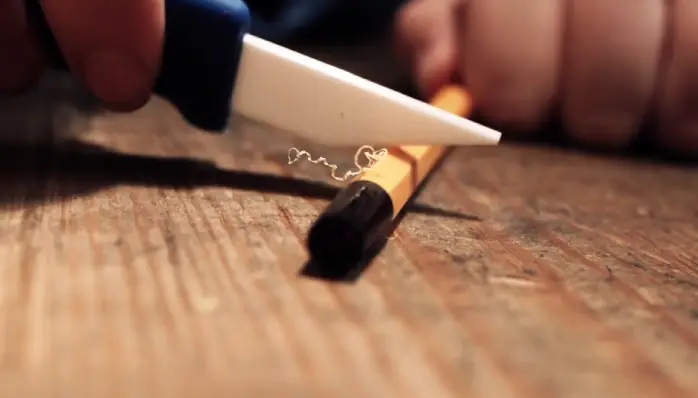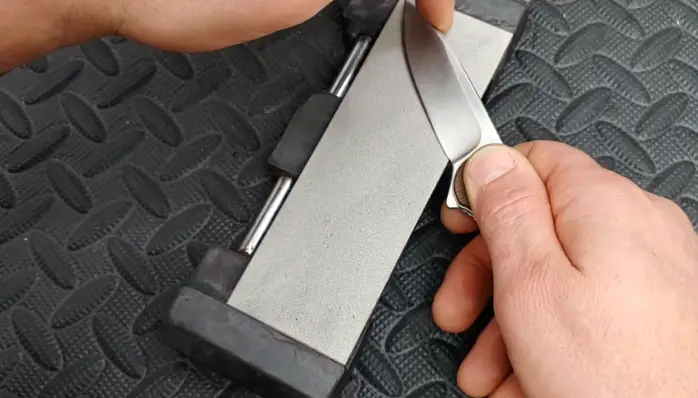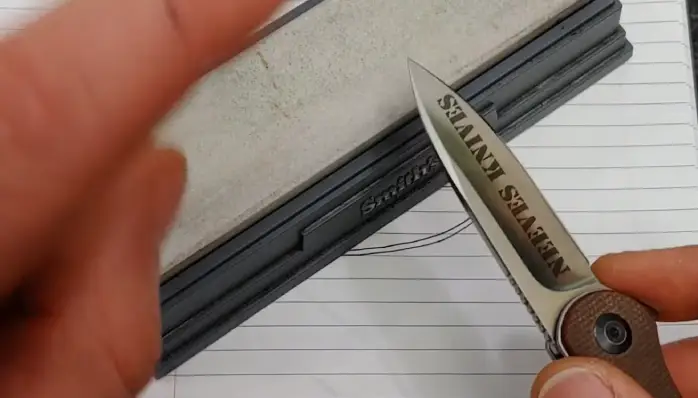A Pocket Knife Can Be Used To Deburr.
After noticing a deburr on a metal or plastic surface, you can get worried about buying a deburring tool. Relax! You can use a pocket knife instead of buying an expensive deburring tool. You may wonder about, a pocket knife can be used to deburr.
Yes, a pocket knife can be used to deburr. Here, you need to clean and scrape the surface. Then, use a ceramic blade knife against the edge to remove the burr. Use sandpaper to sand the surface to get a more smooth finish.
Want to get the complete guide? Follow this entire article and learn how a pocket knife can easily get your deburring job done with a few steps! Don’t miss the best pocket knife recommendation at the end!
Can a Utility Knife be used to deburr?

The main purpose of the deburring tool is to remove burrs and smooth the rough edge. A pocket knife with a sharpened blade can ultimately meet this desired result of edge. But what about using a utility knife for deburring?
Any metal like aluminum must have a rough edge after processing. It requires sharp burns, reduces imperfections, and makes metal safer. As a deburring tool or trimming tool, a utility pocket knife will not effectively remove deburr.
You can expect a pretty good result for deburring large parts with a utility knife. But, you can’t expect a safer and more professional finish with a utility knife. Also, it’ll take longer time and effort to reduce rough edges.
But here’s an advantage of using ceramic blade pocket knives. The multi-purpose ceramic blade pocket knives are widely used as a deburring tool.
Features of ceramic blade pocket knife that ensure the deburring process
The features of the ceramic blade pocket perfectly tell how it helps in the deburring process.
Durable and Safer Blade:
Slice ceramic pocket knife blades are made of zirconium oxide. This blade is very durable and safe. The finger-friendly design features prevent any accidental lacerations from deburring.
User’s friendly:
It can be used ambidextrously. That means both left-handed and right-handed users can use this pocket knife.
Finger-friendly design:
Ceramic blades feature a finger-friendly design which is very safe and prevents any accidental laceration during the deburr process.
Superior grip and comfort:
There’s a finger loop design on the center of the knife which allows good grip and handling during the deburring process.
Perfect deburring tool
It is not made for traditional cutting or slicing purposes. So, this knife can do the deburr job with perfect trimming or scraping.
Interchange of blade Quickly:
There’s no difficulty in changing the blade. You can quickly change blades when needed.
Utility Pocket knife vs. Ceramic blade knife
| Key difference | Utility Pocket knife | Ceramic blade knife |
| Blade | Steel | Zirconium oxide |
| Hardness | Good | Better |
| Result | Pretty good | Superior |
| Require effort | More | Less |
| Ease of changing blade | Harder | Easier |
| Safety | Less | More |
How To Deburr Metal With A Pocket Knife?

Source:https://www.osti.gov/servlets/purl/1134045
(Page -110)
The exact process of deburring with a pocket knife can ensure better quality on a metal surface. Using a pocket knife with safety precautions can get this job done effectively. Let’s know the step-by-step process-
Step 1: Gather the necessary tools
The first step you need to do is to prepare the necessary tools for the workplace. It’ll save you energy and time while working. The necessary tools list is given below-
- Knives
- Scraper or large file
- Sandpaper
Step 2: Take safety precautions
There’s the possibility that metal shaving will come off the surface and can get into your eyes. That’s why you should wear a safety Google on your eyes. You can use hand gloves and a face mask to prevent any risk.
Step 3: Hold the metal part
Take the selected metal part that requires deburring. If the metal part is too short, then secure it safely in the workplace. Again, if the metal part is flat just keep it on a table. Make sure, it is locked before starting the deburring process
Step 4: Use a scraper or large file
Clean the metal surface with a scraper or large file. Use a scraper to scrape a small amount of burr on the surface. If the burr is too big then use a large file.
Step 5: Use a pocket knives
It’s time to use a pocket knife to reach hard areas of the metal surface and trim the burr more perfectly. Don’t press it hard over the surface. Place the pocket knives against the edge at a 90° angle. Hold it firmly and gently move the knife against the edge. Repeat 2 or 3 times if necessary.
If you are deburring a circular area like a hole, then rotate the knives two or three times against the edge.
Step 6: Use a sandpaper
After using a pocket knife, remove or unlock the tool. Check the edge whether there are any burrs left. If there’s a little burr left on the surface, just use grit sandpaper and sand the surface. It’ll remove the small burrs and smooth the surface.
How To Deburr Plastic with a Pocket Knife?
Source: https://www.osti.gov/servlets/purl/1134045 (page-112-113)
Take a look at the step-by-step instructions at a glance. You’ll ultimately get the job done perfectly.
Step 1: Gather the necessary tools and take safety precautions
Minimize the time by preparing the necessary tools that you need for the deburring process. The three necessary tools are given below-
- Knife
- Sandpaper
- Countersink
Use safety goggles and hand gloves to prevent any injuries during deburring!
Step 2: Use a pocket knives
Hold the plastic part securely. Then, place the knives against the edge at 90°. Don’t press it harder. Just drag the knife gently to remove the burr. Repeat two or three times.
Step 3: Use a sandpaper
Use grit sandpaper to remove any left-out burrs and correct minor faults at the edge. Also, sanding the surface will give it a smoother and safer surface than before.
Step 4: Use countersink tools (Optional)
If you need to deburr a hole of plastic, using a countersink tool will give you an effective result. Generally, countersink tools are used for holes that are larger than ½ inch in diameter.
Best deburring pocket knife

There’s a variety of deburring knives available in the market. You need to buy an effective tool that perfectly gets the job done. If you can’t figure out the right deburring pocket knife, you can check the best one below.
Here, I have listed two of the best pocket knives for deburring according to real user experience and review. Hope, you’ll find the best one.
Slice Ceramic Deburring Tool
One of the most popular pocket knives that are widely used for deburring metal, plastic, and 3D printed prototypes. This knife has a safe blade that has few possibilities of accident. The zirconium oxide blade is sharp enough to trim or scrape the rough edge in a minute. The durable nylon handle also provides a more comfortable grip.
I think this is one of the great tools that is worth your money!
Noga ceramic deburring tool
Another perfect deburring knife tool is the Noga Ceramic knife which will make your job more secure and easy! You can use it for straight, curved, and most other common shape cuts. It can rotate 90° angle to trim any burr or rough edge. The finishing result was also very impressive. This is gonna be a more budget-friendly deburring tool than other tools!
Conclusion
Manual deburring is the most time-consuming method. That’s why manual deburring has already lost its popularity. But, you can’t afford an expensive machine for a little deburring process at home. End of the day, a ceramic blade pocket knife is the best choice. If you follow the above instructions and guidelines, you can get a smooth and safer edge on aluminum, metal sheet, or plastic surfaces. Hopefully, this guide will help you out!







